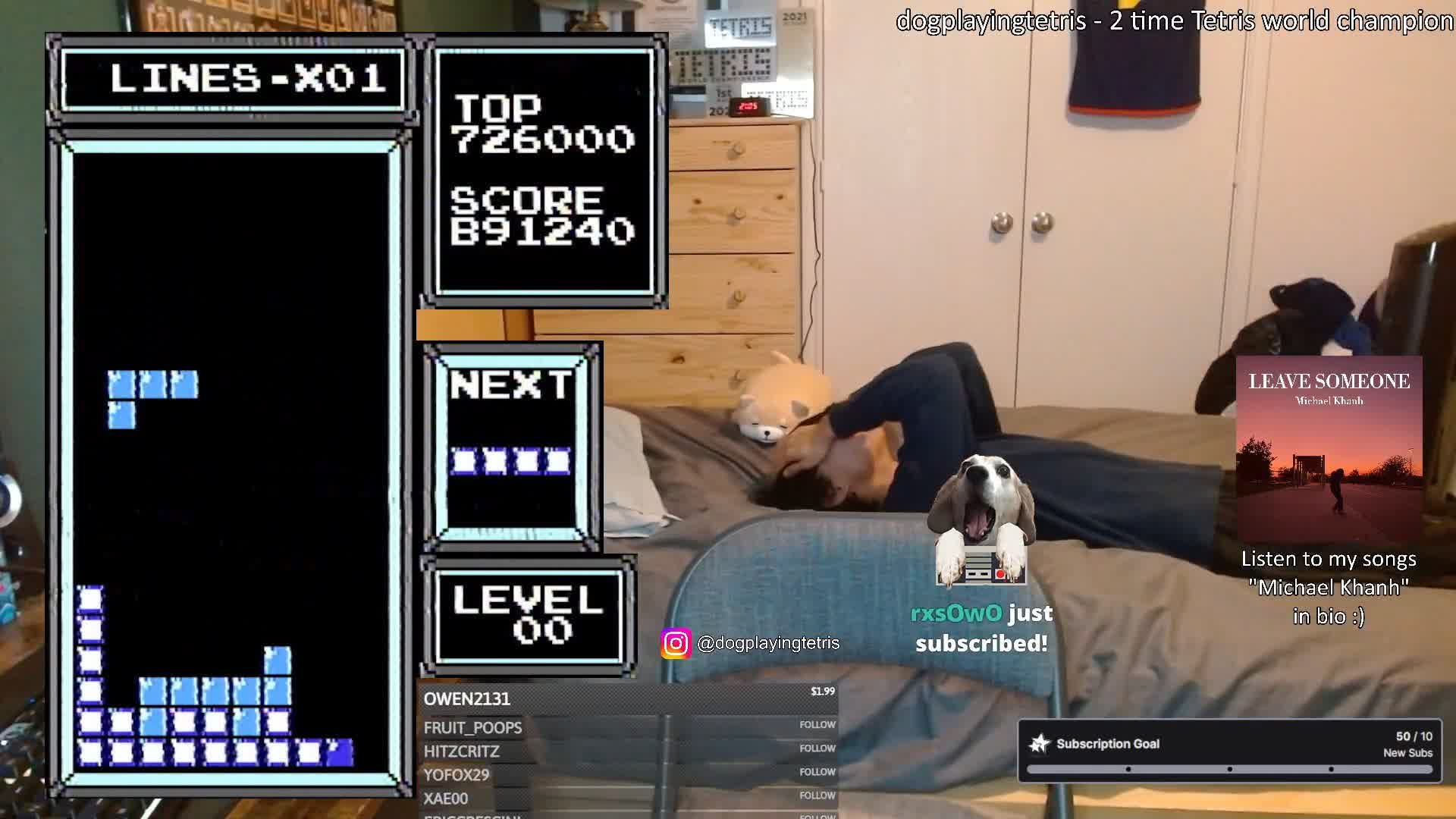Why it matters: Competitive Tetris has existed for decades, but the evolution of professional play has accelerated dramatically in recent years. Just nine months after a 13-year-old became the first person to "beat" the game, Tetris champions are discovering more ways to reach its theoretical endpoints and hit once-unimaginable milestones.
A two-time Tetris world champion recently became the first person, without machine assistance, to activate endless play by completing level 255 in the NES version, causing the game to restart at level 0. This accomplishment significantly raises the theoretical limits for top scores.
The feat took 16-year-old Michael "dogplayingtetris" Artiaga around an hour and 40 minutes, during which he cleared 3,300 lines. After celebrating, he continued for another 40 minutes until his run ended at level 91, setting a new record score of 29.4 million points.
35 years after its release, @dogplayingtris just became the first person to get the NES Tetris rebirth. He made it all the way to level 255, then the game wrapped around and restarted from level 0. pic.twitter.com/Igwa2fIrmJ
– SummoningSalt (@summoningsalt) October 6, 2024
Artiaga's achievement wasn't just about playing until the game restarted. It represents years of research and innovation by Tetris enthusiasts.
From the NES version's release in 1988 until 2011, it was believed that clearing level 29 was impossible because the controller's directional pad couldn't move the blocks fast enough. But new button-pressing techniques eventually allowed players to shoot past level 100, revealing cracks in the game's code – never designed to handle play beyond level 29.
Beyond level 138, glitched color schemes sometimes make blocks difficult to see, and the game becomes highly crash-prone after level 155. With help from AI tools, Willis "Blue Scuti" Gibson reached a "killscreen" crash in January, becoming the first human to "beat" the game.

The one caveat in Artiaga's run is that he used a patched "crash-resistant" version of the game. Still, NES Tetris's crumbling codebase hid another obstacle – the levels started getting longer.
Any Tetris player understands that each level lasts 10 lines, so 255 levels shouldn't add up to 3,300 lines. However, after level 219, the game can no longer accurately track the player's progress, and the discrepancy lengthens subsequent levels. This error and the color glitch eventually culminated in level 235, where Artiaga spent around 20 minutes clearing over 800 lines of nearly invisible blocks.
High-score contests have likely entered a new phase, as professional players can theoretically play patched versions indefinitely. Still, some will continue to explore whether a human player can dodge the many potential crash points and achieve "rebirth," as the post-255 loop is called, on an unmodified version of the game.
